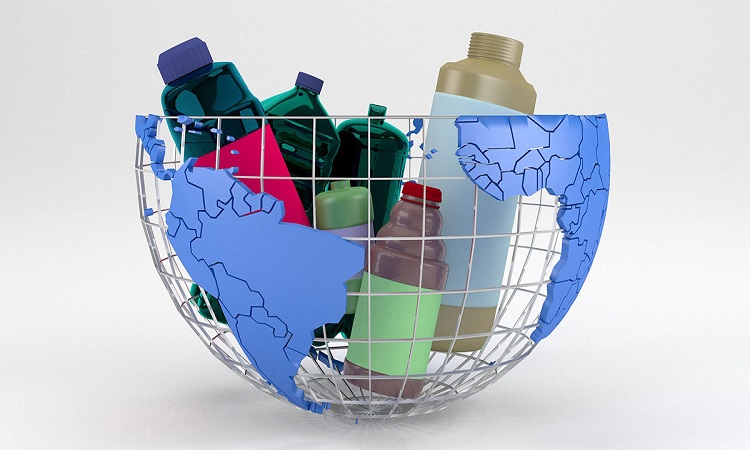Smart Cities- Transforming Waste Management

Authored by Rajul Mehrotra, Director-Strategy & Smart Cities-Xylem India
India needs to go long way in terms of social/behavior change, developing sanitation infrastructure and developing/improving waste management practices. In this article we have highlighted how technology can aid in modernizing waste/sanitation management to enable Swachh Bharat Mission apart from other social change/infrastructure initiatives.
Growth in population and change in lifestyles has led to increase in waste generation. Municipal solid waste includes residential and commercial wastes generated in city areas in either solid or semi-solid form including bio-medical wastes. Safe and cost-effective management of municipal solid waste is a significant social, environmental and health challenge for modern society.
Indian cities alone generate more than 100 million tonnes of solid waste a year. It is estimated that up to 40 per cent of municipal waste in India remains uncollected. A large number of cities do not have any processing facilities which mean that the municipalities tend to haphazardly dump wastes all over the landfills. Lack of storage and collection facilities, segregation of waste, pollution and contamination due to dumping of garbage on roads, open transportation in trucks, space constraints with landfills, social and environmental issues associated with landfills and lack of reusable and recyclables are the key issues in solid waste management.
Considering the social, environmental and health impact of waste management and sanitation, Government of India has launched Swachh Bharat Mission. The objective of the Mission is to improve solid waste management practices leveraging modern technologies, eliminate open defecation and manual scavenging by providing toilet facility, capacity augmentation of ULBs, involving private sector, bring behavior change and social change.
While the Government is committed to building millions of toilets to eliminate open defecation, technology plays an important role in improving solid waste management, sanitation and citizen communication/awareness.
Technology can provide visibility on city sanitation & solid waste management, route planning for garbage collection, resource optimisation, efficient asset management, efficient maintenance, visibility of waste bins, air quality measurements etc.
Some of the key technologies relevant to achieve objectives of Swachh Bharat Mission includes:
- Online platforms: Online platforms provide options and alternatives to the user to look into reusing old stuff. The existing user is also encouraged to look for options to sell and regain value from the product before discarding the product as waste.
- Analytics: Accurate projections on total waste generated, waste type and identification of high waste generation areas enable effective planning and management of solid waste management services. Use of analytics during events with large citizen involvement such as festivals and fairs can ensure smooth collection and transport of waste
- Crowd-sourcing: Citizens can be encouraged to report (web/mobile/social channels) waste-related activities which need urgent attention from the authorities.
- Sensor-based waste collection: Sensor-based waste bins to identify status of waste bins if it is empty or filled so as to customise the waste collection schedule accordingly and save costs
- Automated waste collection system: Automated Waste Collection System (ACS) is a long-term solution and can take care the conventional methods like door-to-door, curb-side, block, community bins collections and transportation via chute system from high rise buildings with waste sucked though pipes and minimal human intervention
- GPS devices and sensors on waste truck: GPS technology to route the waste collection trucks to optimise the collection efficiency and ensure contractors dump waste in designated places. It will also give a clear picture of waste generated per ward
- Sensor-based sorting: Sorting waste material with the use of sensor technology helps in smart sorting. The sensor technology can recognise materials based on their visible spectrum or colour with infrared/ultraviolet spectra or based on their specific and unique spectral properties of reflected light, or atomic density or conductivity/permeability or atomic characteristics
- Pollution sensors: Leverage the pollution sensors to gauge pollution levels at landfills
- Energy simulation (waste to energy): Use of energy simulation software and analytics can provide accurate projections of waste generation and energy production from waste
- Analytics-based landfill management: Accurate waste generation and collection projections along-with break-up of type of waste can enable smart landfill management
The Swachh Bharat Mission will cover 4041 urban areas in India in next 5 years. Meeting the Swachh Bharat mission objectives will require a huge social change and change in the way cities handles waste & sanitation. Technology will become the key enabler in improving efficiency & capacity of city services to improve waste & sanitation value chain. Technology will also enable real time governance & control of waste and sanitation value chain for Swachh & Smart Bharat.

